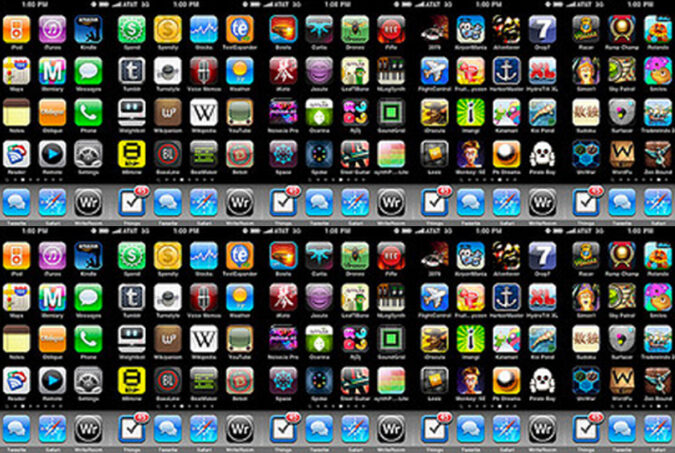
We’re living through a crisis of distraction. Image: "What’s on my iPhone" by Erik Mallinson
Ed: What persuasive technologies might we routinely meet online? And how are they designed to guide us towards certain decisions? There’s a broad spectrum, from the very simple to the very complex. A simple example would be something like Amazon’s “one-click” purchase feature, which compresses the entire checkout process down to a split-second decision. This uses a persuasive technique known as “reduction” to minimise the perceived cost to a user of going through with a purchase, making it more likely that they’ll transact. At the more complex end of the spectrum, you have the whole set of systems and subsystems that is online advertising. As it becomes easier to measure people’s behaviour over time and across media, advertisers are increasingly able to customise messages to potential customers and guide them down the path toward a purchase. It isn’t just commerce, though: mobile behaviour-change apps have seen really vibrant growth in the past couple years. In particular, health and fitness: products like Nike+, Map My Run, and Fitbit let you monitor your exercise, share your performance with friends, use social motivation to help you define and reach your fitness goals, and so on. One interesting example I came across recently is called “Zombies, Run!” which motivates by fright, spawning virtual zombies to chase you down the street while you’re on your run. As one final example, If you’ve ever tried to deactivate your Facebook account, you’ve probably seen a good example of social persuasive technology: the screen that comes up saying, “If you leave Facebook, these people will miss you” and then shows you pictures of your friends. Broadly speaking, most of the online services we think we’re using for “free”—that is, the ones we’re paying for with the currency of our attention—have some sort of persuasive design goal. And this can be particularly apparent when people are entering or exiting the system. Ed: Advertising has been around for centuries, so…
